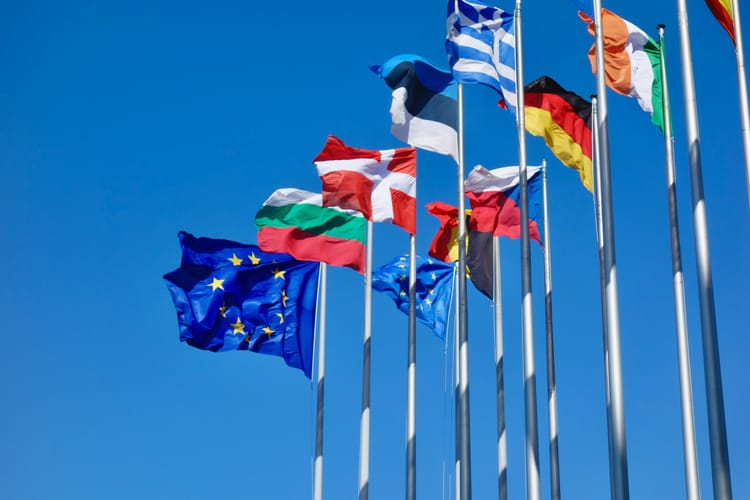What’s COP got to do with it? Key signals and what they mean for businesses

Just like Tina Turner, the business community could be forgiven for thinking ‘What’s COP got to do with it?’ For CSOs, the answer is: quite a lot actually, just not in the way many imagine. COP doesn’t (and can’t) deliver perfect blueprints for company-level strategy. Instead, it issues signals, directional nudges, norms evolution and emerging guardrails. Our job is to read them, assess them, and translate them into actionable strategies based on how we expect the landscape to evolve.
As COP30 approaches in Belém, Brazil, in November 2025, the stakes are higher than ever. This summit is being framed not as a negotiation marathon but as a decisive pivot: “If Paris was the COP of international agreement; Belém is the time of implementation,” to paraphrase André Correa do Lago, President of COP30.
But what does that ambition really mean for business? Below I unpack three key thematic signals to monitor, and how they could cascade into corporate risk and opportunity.
From pledges to practice: Why COP30 matters (without expecting a blueprint)
It’s tempting to think COP will emerge with binding rules that companies must obey, but let’s be honest, that’s not going to happen across globally diverse jurisdictions. What COP does have the power to do is reshape the ecosystem of incentives, legitimacy, and expectation – a classic Overton window manoeuvre that normalises what was previously radical, shifting standards, redefining what best practice looks like, and forcing a re-think of the way we categorise and manage risk.
As a few examples:
- COP30 is explicitly being positioned as a ‘turning point’, moving the multilateral process toward a post-negotiation era of implementation over drafting; the language will be normalising action over planning.
- Brazil’s COP presidency is promoting a ‘Global Mutirão’ model, invoking a participatory, collectively mobilised effort that brings business, civil society, government, cities, and Indigenous people into a shared agenda; explicitly supporting collaborative action towards a common goal rather than a competitive zero sum game.
- And the ‘Baku-Belém roadmap’ is pushing to scale climate finance from the ~US$300 billion wide consensus at COP29 to US$1.3 trillion annually by 2035; a step change in the way climate finance is anchored.
Each of these is less a fixed mandate and more a directional nudge that acts as a signal of where the global consensus is trying to steer. Businesses don’t need to wait for the final treaty, but can read the runes to start aligning ahead of regulation, stakeholder scrutiny, and shifting capital flows.
Three key themes to watch
Here are three ‘signal zones’ that will likely be hotly contested at COP30, each with potentially deep ramifications for corporate strategy:
- Nature and forests as infrastructure, not afterthought
COP30 has been repeatedly and unsurprisingly dubbed the ‘Amazon COP’, and for good reason: Brazil is placing forests at the strategic core of its presidency agenda. The shift here is from seeing nature-based solutions as optional add-ons to treating forests, ecosystems, biodiversity as central infrastructure for climate resilience and transition.
For business this means:
- Intensification of supply chain scrutiny. Sectors tied directly or through their supply chains to agriculture, timber, livestock, pulp & paper, palm oil, mining, etc., will come under increased pressure to prove zero-deforestation sourcing, traceability, and ecosystem restoration commitments.
- Biodiversity and carbon credits are evolving. The design of the Tropical Forests Forever Facility (TFFF) may shift the dial on how carbon credits tied to forest protection are valued, regulated, and integrated into corporate portfolios.
- Cross-sector dependency logic. Even companies apparently outside nature sectors (e.g. consumer goods, fashion, real estate) will increasingly find that their net zero claims, offsets, and risk models hinge on ecosystem and natural capital integrity.
- Regulation creep. As COP normalises ecosystem-based metrics, governments may embed deforestation risk screens, environmental impact disclosure rules, or ‘nature risk capital charges’ into financial regulation.
Signal to watch for: Does COP30 end with a legally anchored agreement (or framework) that mandates sovereign payments or corporate disclosures tied to forest conservation e.g., ‘forest performance obligations’ or default offsets?
- Climate finance 2.0: from voluntary to embedded incentives
COP30 is pushing a fundamental reframing of climate finance. Instead of continuing as largely voluntary flows, momentum is building towards finance becoming more systemically embedded as part of the architecture of global capitalism, in service of the ambition to channel private capital at scale for mitigation, adaptation, and loss & damage.
For business this means:
- Cost of capital shifts. As risk associated with climate inaction becomes more priced in (e.g. via transition risk, stranded asset risk, nature risk), capital providers may demand stronger climate credentials in deal structure.
- Accountability rising. COP30 may set new norms for what counts as climate finance (e.g. setting minimum integrity, deliverability, and justice standards), which could affect how companies report or secure funds.
- Loss & damage becomes material. As the frontier between adaptation and loss & damage solidifies, businesses may face new obligations (or liabilities) tied to climate harm compensation, especially in sectors with high exposure (e.g. infrastructure, agriculture, insurance).
Signal to watch for: Does COP30 bring forward operational frameworks that require public/private co-investment, minimum standards for project pipelines, or new taxonomies for transition-ready investments?
- Inclusion, fairness and participation as preconditions, not nice extras
Brazil’s COP presidency is foregrounding justice, inclusion, Indigenous rights, and multi-level governance as non-negotiables, not decorative add-ons, with the idea that climate solutions must be co-designed, accountability must be multi-stakeholder, and those historically marginalised must have structural voice.
For business this means:
- Reputation risk grows sharper. Any claims related to supporting the green transition will increasingly be tested through lenses of social and environmental justice where indigenous opposition, community activism, or failing to embed local consent may crater legitimacy.
- Co-design expectations. Businesses may be expected not just to consult, but to co-develop projects with affected communities, enabling local ownership, revenue sharing, and participatory governance.
- Local and regional partners matter more. The role of cities, states, Indigenous governments, NGOs, and local actors gain prominence at the expense of national governments as direct partners or requirement-checkers.
Signal to watch for: Does COP30 adopt a ‘Global Ethical Stocktake’, or embed Indigenous and local representatives into formal decision bodies, setting a precedent for future multilateral processes which will ripple into business requirements for legitimacy and stakeholder alignment?
What business should do now: Actions in the signal space
The real value of COP30 lies after the final declarations fade. The question for CSOs is: how do we ensure those signals lead to change, not just rhetoric?
- Scan early, interpret often. Monitor COP negotiation texts, side events, corporate forums, and finance streams. Even ambiguous language can be a signal, consider it against your industry, supply chain, investor base.
- Stress-test your strategy against ‘signal scenarios’. What if TFFF becomes canonical and is extended to carbon markets? What if a subset of forest performance obligations becomes a binding standard? War game scenarios to stress test supply chain resilience, capital access, offset portfolio integrity, community license to operate.
- Embed responsiveness. Build adaptive levers into your sustainability roadmap so that your company can pivot within 6-12 months to new expectations emerging from COP30. Avoid rigid multi-year plans that assume a stable regulatory environment.
- Engage in the process. Don’t treat COP as a spectator event, participate. By showing up you can influence language, bring corporate realism to negotiators, and signal credibility to stakeholders.
- Translate signal into narrative early. Use COP-derived signals to shape board briefings, investor messaging, marketing claims, supply chain engagement. Before the rules harden, you gain positioning advantage by leading in interpretation.
Why COP30’s signals matter to you
So, what’s COP got to do with it? COP30 is shaping up as a potential inflection point: not a blueprint for your business, but a compass for the next decade and the signals it sends about nature, finance, and inclusion could recalibrate entire risk and value landscapes for the corporate world.
Written by Simon Heppner, Chief Sustainability Officer at Ecologi
Ecologi is the UK's most trusted climate action platform for every step of your climate journey. Speak with one of their climate experts today at www.ecologi.com







Member discussion